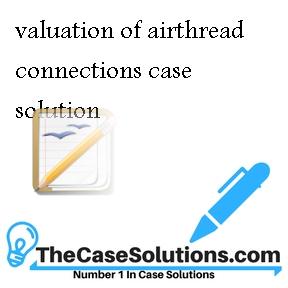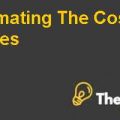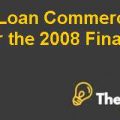After a preliminary evaluation of the AirThread operations and the possible synergies arising as a result of integrating the two business operations, a pure financial has been conducted in order to make sure that the shareholders’ funds are invested in order to maximize the shareholders’ worth. In order to arrive at the economic value of AirThread business operations several valuation models has been considered such as the price to earnings ratio, market multipliers, net present value and adjusted present value techniques. However, since the acquisition of AirThread would be completed through a leveraged buyout, hence, the acquisition will be financed through significant levels of debt and after the acquisition the level of debt will be reduced through amortization of debt over the five year period and the outstanding debt obligation would be paid at the end of the fifth year.
Calculation Process for the Valuation of AirThread’s Enterprise Value
The valuation of AirThread has been conducted using the future expectation of the AirThread operations on a going concern basis and in order to formulate the future forecast of the AirThread the profit and loss statement has been constructed by taking the services revenue as the base and the rest of the figures have been calculated as the appropriate proportion of the services revenues. However, the value of AirThread can be calculated using the alternate valuation methods as stated above, but we have used the present value future cash flows valuation technique in order to calculate the value of AirThread operations. This valuation technique uses the net future cash flows that the business is expected to generate over the life of the business operations. Furthermore, since the cash flows would be generated in future but we have to arrive at the business value on today, therefore, this valuation model uses the appropriate discount rate in order to arrive at the present value of future cash flows, in this way, this valuation model considers the time value of money as well while arriving at the valuation of AirThread business operations and the present value calculated in this way would the overall enterprise value.
Suitable Valuation Model
Further, the upcoming senior associate Jennifer Zhang concerns about the valuation technique that should be used in arriving at the reasonable valuation of AirThread operations and specifically she will be considering the valuation model of net present value which discounts the future cash flows of AirThread using the weighted average cost of capital as the discount rate. However, the net present value considers the cost associated with the capital structure by weighting the equity capital and debt capital in proportional to the market value of each type of capital invested. On the other hand, the alternate valuation model which is with the little alteration in the adjusted version of the net present value method and is known as adjusted present value technique. However, this valuation model also uses the future cash flows of AirThread business operations, but the main difference between net present value method and adjusted net present value method is that the latter one excludes the effect of debt and interest payments in the calculation of free cash flows, meanwhile, the adjusted present value discounts these cash flows with the cost of equity assuming that the company is hundred percent equity financed. Furthermore, the effect of debt financing is separately incorporated into the present value calculated as above. In the case of acquisition of AirThread, the acquisition is supposed to be a leveraged buyout that would include a significant amount of debt financing, therefore, the valuation of AirThread should be conducted using the adjusted present value technique because this valuation model considers the business risk and debt risk separately and in this way it would be more reasonable to calculate business risk and financial risk separately so that the use of debt can be evaluated.
Adjusted Present Value and Evaluation of Cash Flow
Since the adjusted present value model would provide a more reasonable estimate of the valuation of AirThread conducted using the of future cash flows, therefore, the cash flows of the projected income statement have been used in order to calculate the cash flows projection over the five year period. Meanwhile, the earnings before interest and tax has been taken from the forecasted income statement and these earnings have been adjusted for tax in order to arrive at the net operating profit after tax. However, the net operating profits after tax are expected to increase each year and would be increased by around 78% in the year 2012 in comparison to the results in year 2008, further, the non-cash item, i.e., depreciation, has been added back because depreciation would not result in cash outflow and the depreciation would increase by 35% in the year 2012 and this increase is confirmed by the capital expenditure incurred. Additionally, the cash flow required to finance the................
This is just a sample partial case solution. Please place the order on the website to order your own originally done case solution.














